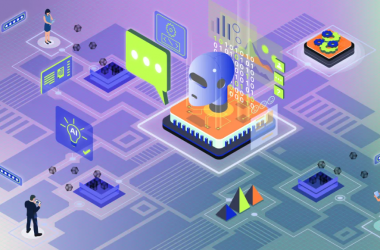Introduction:
Medical dictation software is a form of software that allows doctors and other medical professionals to dictate notes onto a computer. Dictaphones record what is said and then communicate the information to a computer. Some doctors prefer to dictate their notes and have them transcribed by humans, while others utilize it as a backup when they cannot talk. Nurses and other medical personnel needing to record patient information during an examination or consultation also use this program.
Understanding Cloud-Based Medical Transcription Software
Cloud-based medical dictation is a novel method of Medical transcription software. The cloud-based medical dictation service is less expensive than traditional in-person transcribing. Still, the quality of the transcripts may be inferior because keeping up with all the new technology is challenging. Medical transcriptionists have a lot of work to complete, and their job is becoming increasingly tough.
Medical transcriptionists can now dictate their notes in real-time and save them for later use, thanks to the arrival of cloud-based medical dictation. Medical transcriptionists are projected to employ over one million workers in the United States alone. This figure is projected to rise when new technologies enter the market.

Medical transcriptionists must type notes from audio recordings (dictations) from doctors and other healthcare team members. These specialists utilize specialized software that turns audio files into written documents on screen so that those who need access to these records can read them.
Benefits of Cloud-Based Medical Transcription Software
The following are a few advantages of employing cloud-based Medical transcription software in your hospital or practice.
- Convenience: Because cloud-based medical dictation software is accessible from anywhere and anytime, it is very easy to use.
- Flexibility: The cloud-based medical transcription dictation software’s flexibility allows clinicians to dictate notes whenever they choose, regardless of location or device.
- Low-cost: Cloud-based medical dictation software is less expensive than other solutions since it eliminates the need for expensive hardware and upgrades and a dedicated IT crew to manage it.
Cloud-based medical dictation software is an affordable and simple way to meet your requirements. It’s time to remove the paper and migrate your dictations to the cloud. Security, regulatory compliance, connectivity with other systems, and scalability are just some benefits of cloud-based medical transcription voice-to-text software.
Considerations for Implementing Cloud-Based Solutions
Compliance and security
Security and compliance are critical when choosing a cloud service provider, as cybercrime is expected to cost $6 trillion by 2021. Check to ensure security, check dor’s security infrastructure, procedures, identity management, physical security measures, and data backup and disaster recovery policies to assess Wellness
Your company’s stability depends on its partners’ stability, and a cloud partner’s value cannot be overstated. Therefore, before finalizing your cloud vendor, you should investigate their business and financial condition.
It would be best if you double-check the following:
- The financial records of the corporation
- Structure of management and other third-party connections
- Existing customer reputation, reviews, and referrals
- In case of any legal issues
- All third-party audits that are available
Technical Competencies
Service providers should have a full stack of technologies to support present applications and meet future demands. Examine their plan to see whether they have the mindset to spot trends early and innovate.

Enhanced Collaboration and Workflow Efficiency
The cloud has become an essential component of many industries. For example, cloud services in healthcare bring numerous advantages to healthcare providers and patients.
Drug Development
Cloud computing is important in drug recovery since identifying diverse compounds from billions of chemical structures takes vast processing resources. Infrastructure as a Service (IaaS) offerings are particularly beneficial in streamlining this procedure.
Patient Records
Cloud storage enables doctors to securely access and exchange patient data in real-time, increasing care coordination and the development of comprehensive treatment plans.
Shared accessibility
The potential of cloud computing to share access amongst health practitioners and patients is the finest of all uses.
Prescriptions and care delivery are both seamless.
Cloud computing has improved the ability to store, issue, and manage prescriptions and care delivery. The cloud, for example, eliminates many of the manual processes connected with prescription management. This significantly decreases doctor-patient interaction time, resulting in seamless prescribing and care delivery.
Furthermore, the cloud ensures that prescription refills and other treatments are available on time. Those seeking special care can now quickly streamline the process to track the status of planned delivery better.
Integration with Electronic Health Records (EHR)
EHR integration solutions benefit patients, healthcare providers, and small and large healthcare organizations throughout the industry.
Organizations maintain real-time information accessible to the relevant individuals where and when they need it by ensuring interoperability in EHRs. Furthermore, there are numerous other advantages that the healthcare sector can get from EHR interoperability, including:
Processes for billing and coding are streamlined.
“EHRs can improve efficiency, increase revenue cycle management by enhancing scheduling and medical billing activities, cut costs, and enhance the quality of human services,” says Christine Queally Foisey, President and CEO of MedSafe.
Indeed, comprehensive interoperability with all key stakeholders (payers/providers) simplifies cross-functional activities like reimbursement management. This helps to reduce the cost and lead time associated with payments for services performed.
Improves Initiatives for Population Health Management
To monitor public health trends and solve community challenges, EHR integration is critical for population health management projects.
Facilitates Clinical Trial Collaboration between Research Institutions
Researchers from OpenNotes collaborated with Beth Israel Deaconess Medical Centre to study the advantages of giving patients complete access to their doctor’s notes and EHRs.
Patient Data is consolidated
Because EHRs integrated patient data, researchers could gather data on Covid-19 patients. This has allowed healthcare organizations to boost the number and quality of data analysis and insights provided. Traditional manual methods necessitate much seeking, duplication, and storage.

Conclusion:
Cloud-based transcribing is gaining popularity in healthcare as more data is converted to digital format and software programs become more web-based. There are numerous advantages to employing cloud-based Medical transcription software at a hospital or practice, including streamlined workflow, access from practically any device, 24/7/365 availability, Cost-effectiveness, HIPAA-compliant, and security.
Most physicians and healthcare facilities are increasingly outsourcing their medical transcribing work due to increased productivity and other benefits. However, preserving the security and confidentiality of patient data is a serious concern.
To address this, established Medical transcription software service providers are implementing safeguards to protect sensitive client data via cloud-based solutions – hosted transcription services accessible via a secure Internet connection.
FAQs:
What is the difference between cloud-based and on-premises transcription software?
The primary distinction between cloud and on-premise software is where it is stored. A Cloud software is hosted on the vendor’s server and accessed via a web browser, whereas on-premise software is installed locally on your company’s PCs and servers.
How is data security ensured in cloud-based solutions?
Organizations must be able to protect sensitive data wherever it travels. Cloud service providers assist you in addressing safe cloud data transport, storage, and sharing by integrating many levels of advanced encryption for securing cloud data in transit and at rest.
Can cloud-based transcription software handle large volumes of data?
Yes, cloud transcribing software for medical transcription can handle massive amounts of data.
How does cloud-based transcription improve remote work and collaboration?
Asynchronous communication and editing are possible with cloud collaboration. Users do not need to wait for a teammate to complete their work on a document; they can contribute anytime. Work is completed more quickly because employees can access documents when they are ready to participate.
What are the costs associated with implementing cloud-based solutions?
You will spend anywhere from $0.15 per GB to a few thousand dollars monthly. Whatever cloud storage provider you choose, your monthly budget will range between $5 and $25 per user. The typical monthly flat charge range is $2 to $50.









